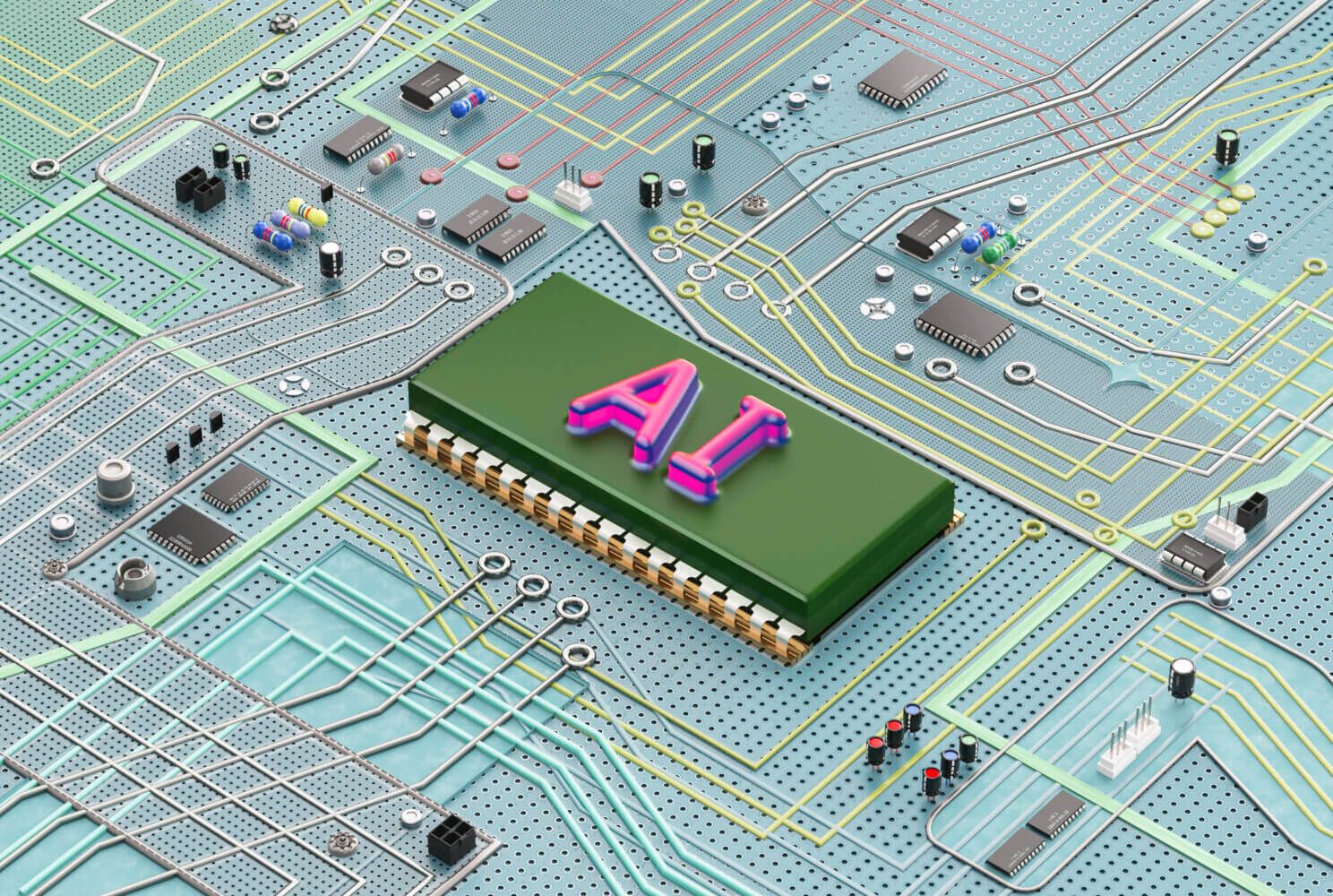
Portfolio Manager Sean Sun shares his thoughts about investment opportunities arising from AI models and the advantages of active management.
Tread Carefully: Investment Opportunities in Artificial Intelligence
I‘m Sean Sun, portfolio manager at Thornburg Investment Management.
Since OpenAI’s release of ChatGPT in November, artificial intelligence has captivated some and terrified others. In fact, I tried to use it to create this video, but I found it left much to be desired so we’re sticking with my original notes.
Artificial intelligence has been researched for decades, but recent breakthroughs have led to significant advancements in the capabilities of neural networks and artificial intelligence models. Companies and investors should take notice, because AI has the potential to disrupt and transform many industries.
Generative Artificial Intelligence applications, such as ChatGPT and MidJourney, are prime examples of this inflection point. These models can take in natural language text prompts and generate unique content such as conversations, poetry, summaries, language translations and images.
ChatGPT’s rapid adoption has outpaced other popular tech applications such as Instagram and Spotify, and is the culmination of several technological advances.
One is a novel neural network architecture called the transformer. Due to its self-attention mechanism, transformers can perform deep learning on sequential data very efficiently and has become a critical building block and key factor in the success of natural language processing tasks.
The Transformer has become an ideal neural network architecture because of three key features. First it is expressive, meaning that it is general purpose enough to cover many real-world algorithms in a small number of compute steps. Second, it is optimizable via back propagation and gradient descent. And third, it is highly efficient in that it works well with high parallelism compute architectures like GPUs.
Additionally, AI has also benefitted greatly from progress on the hardware side with ever faster chips capable of training these models. The computing power used to train AI models today has increased by a factor of one hundred million over the past 10 years.
Increasing the data used to train these models is another advancement. ChatGPT is what is known as a “large language model” or LLM. While the concept has been around since the early 2000s, once it’s scaled up with enough computing power and trained on massive amounts of data, you end up with these emergent properties including the ability to identify patterns in language and make predictions with incredible accuracy. These enlarged language models not only achieve a significant performance improvement, but also exhibit some special abilities such as in-context learning.
In a rough sense, large language models are like the game mad libs, but at the scale of the entire internet. You give it a prompt and it attempts to predict the next word or clusters of words in a sequence. These models are now so sophisticated they can pass the bar exam and various other standardized tests with flying colors.
To achieve this feat, GPT-3, was trained on over 45TB of data and has over 175 billion parameters. The prior iteration, GPT-2 had only 1.5 billion parameters and the next iteration GPT-4 is reported to have a staggering 170 trillion parameter count.
The pace at which these models are improving is exponential and the timeline of adoption may prove to be very rapid and widespread. Many people believe we are witnessing a “platform shift” where AI will become a new tech platform layer on which all sorts of software and services will be built on top. AI’s transformation could remind us of the smartphone or cloud computing, or even the internet in terms of serving as a foundational platform for innovation and value creation.
Sizing the AI opportunity is difficult, as many of the applications and use cases are still relatively nascent. Furthermore, the training and deployment of these AI models is expensive, consuming a massive amount of computing resources and infrastructure. Nevertheless, the AI market has been growing rapidly over the past few years and is showing no signs of slowing down. We expect the market to grow rapidly as using AI effectively has clear economic and productivity benefits for organizations. In fact, Bank of America forecasts that the market will reach about $900bn by 2026.
The implications of generative AI are vast and far-reaching because these models are general purpose technology and not point solutions. The impact is likely to span across multiple industries. In healthcare, AI can help doctors diagnose diseases more quickly and accurately or help pharmaceutical companies screen drug compounds better. In transportation, AI can help cars drive themselves and reduce accidents. In software development, AI can help developers write and debug code more quickly and efficiently. More broadly, AI has the power to automate tasks, create new products and services and change pricing models and distribution channels.
With any new technology there are downsides and risks. One major concern with AI is the potential for misuse. Generative AI may be used to create ‘deepfakes’ and spread misinformation. AI could also be used to create an army of intelligent bots capable of advanced phishing attacks. AI models can exhibit problematic biases, especially if the training dataset is biased in the first place. Finally, these models can exhibit a general lack of common sense or hallucinate at times, which is basically just making up answers.
What’s certain is that AI is here and is not speculative technology anymore. At Thornburg, we think the opportunity for AI can be framed as millions, billions and trillions: We will see millions of users, billions of dollars in spending and ultimately trillions of dollars in economic impact over time. Companies that leverage AI technology to improve their products, services, and operations will likely come out ahead.
We expect the winners will be companies that provide the picks and shovels or critical infrastructure to the industry, such as semiconductor companies, hyper scalers, data providers and software tools. Cybersecurity vendors also stand to benefit by defending companies against AI based attacks. What is exciting is that as we stand today, the AI industry is still in its infancy. We feel equities have yet to completely price in the full economic outcome of this forthcoming revolution which may be orders of magnitude larger than prior tech advancements. And that’s something I don’t need to ask ChatGPT.
Important Information
The views expressed are subject to change and do not necessarily reflect the views of Thornburg Investment Management Incorporated. This information should not be relied upon as a recommendation or investment advice and is not intended to predict the performance of any investment or market.
This is not a solicitation or offer for any product or service, nor is it a complete analysis of every material fact concerning any market, industry, or investment. Data has been obtained from sources considered to be reliable. Thornburg makes no representations as to the completeness or accuracy of such information and has no obligation to provide updates or changes. Thornburg does not accept any responsibility and cannot be held liable for any person’s use of or reliance on the information and opinions contained herein.
Investments carry risks, including possible loss of principal.
Outside the United States
This is directed to INVESTMENT PROFESSIONALS AND INSTITUTIONAL INVESTORS ONLY and is not intended for use by any person or entity in any jurisdiction or country where such distribution or use would be contrary to the laws or regulations applicable to their place of citizenship, domicile, or residence.
Thornburg is regulated by the U.S. Securities and Exchange Commission under U.S. laws, which may differ materially from laws in other jurisdictions. Any entity or person forwarding this to other parties takes full responsibility for insuring compliance with applicable securities laws in connection with its distribution.
For Australia: Thornburg holds a foreign AFSL 526689.
For Hong Kong: This article is issued by Thornburg Investment Management (Asia) Limited (“Company”), a wholly-owned subsidiary of Thornburg Investment Management, Inc. The Company is currently licensed with the Hong Kong SFC for Type 1 and Type 9 regulated activity, with the CE No.: BPQ208.
The material is only intended for Individual, Corporate and Institutional Professional Investor Use Only and may not be reproduced or redistributed to any person without the written consent of Thornburg Investment Management (Asia) Limited or its affiliated companies.
The material has not been reviewed by the Securities and Futures Commission of Hong Kong. This document is for informational purpose only and should not intended to constitute any tax, accounting, regulatory, legal, insurance or investment advice and does not constitute any offer or solicitation to offer or recommendation of any investment product/service from the Company.
The information provided is not intended to predict the performance of any investment or market. Data has been obtained from sources considered reliable. Notwithstanding, the Company makes no representations as to the completeness or accuracy of such information or opinion and has no obligation to provide updates or changes. The Company does not accept any responsibility and cannot be held liable for any person’s use of or reliance on the information and opinions contained herein.
Investment involves risks. Past performance is not a guide to future performance and should not be the sole factor of consideration when selecting a product. You should not make investment decision solely based on this general information. If you have any queries, please contact your financial advisor and seek professional advice. All financial investments involve an element of risk.
Discover more about:
More Insights

Fishing In A Profitable Pond

Finding Opportunity Amid Imbalance: 2026 Market Outlook

Thornburg Income Builder Opportunities Trust Announces Distribution

Ferrari’s Electric Future and the Evolution of Luxury Investing

FOMC Update: Fed Approves Third Consecutive Rate Cut, Projects Slower Pace


